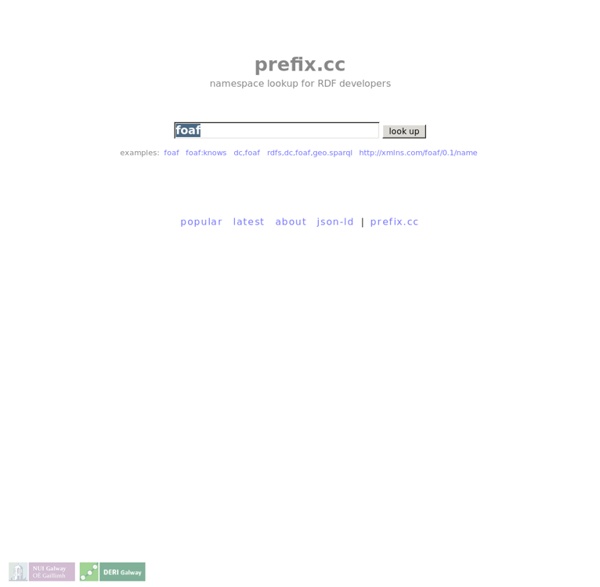Zoom
Trash



searchFAST Welcome to the new searchFAST user interface. This new interface simplifies the process of heading selection, in an easy to use one-page design. FAST subject headings were developed by adapting the Library of Congress Subject Headings (LCSH) with a simplified syntax, retaining the very rich vocabulary of LCSH while making the schema easier to understand, control, apply, and use. RDFS and Inferencing Resource Description Framework Schema (RDFS) extends RDF with simple organisational constructions. These help define concepts more explicitly and also allow for inferences to be generated with a reasoning engine. Classes and Subclasses An rdfs:Class is a set of elements — it is an organisational construct rather than a tangible object. The element rdfs:SubClassOf defines a subclass relationship. If Novels are a subclass of Book and ‘Great Expectations’ is a member of the class Novel, then (through inference) ‘Great Expectations’ is also a member of the class Book.
Documentation - COEUS COEUS has now the capability to share your data in the Nanopublication format. With this new plugin you can transform your integrated data in this prominent format by following the next steps: Go to the Nanopublication Section on the Dashboard. Select the concept root and related data that will generate the nanopublications. PubChemRDF Release Notes V1.6 beta (See the V1.5.2 beta Release Notes)Total number of triples: (last update on: )for more details, please see Table 2 1. Introduction Semantic Web technologies are emerging as an increasingly important approach to distribute and integrate scientific data. These technologies include the trio of the Resource Description Framework (RDF), Web Ontology Language (OWL), and SPARQL query language.
RDF and JSON: A Clash of Model and Syntax – Lost Boy I had been meaning to write this post for some time. After reading Jeni Tennison’s post from earlier this week I had decided that I didn’t need too, but Jeni and Thomas Roessler suggested I publish my thoughts. So here they are. I’ve got more things to say about where efforts should be expended in meeting the challenges that face us over the next period of growth of the semantic web, but I’ll keep those for future posts. URL, URN, URI, IRI - Why So Many? Computer guys tend to lack imagination, especially when they work with acronyms. This may lead to a lot of funny stuff. Let’s look at the following acronyms, for instance: URI, URN, URL, and IRI. In interviews I like to ask this question and only once a guy was able to give an almost 100% correct answer. Somehow, I was not particularly surprised about it, as even widely adopted specifications contain subtle mistakes.
Using SPARQL to access Linked Open Data Lesson Goals This lesson explains why many cultural institutions are adopting graph databases, and how researchers can access these data though the query language called SPARQL. Table of contents Welcome to the OpenUp Data Enrichment Service OpenUp Client The OpenUp Client allows you to access DES functionality from any web page you are browsing. Simply drag the bookmarklet link below onto your toolbar and click on it when you want to know more! It's still experimental so there may be the odd glitch! owl:sameAs owl:sameAs is an OWL built-in property used to link an individual to an individual. Such an owl:sameAs statement indicates that two URI references actually refer to the same thing: the individuals have the same "identity". In N3 syntax = is a synonym for owl:sameAs.
Nature.com Ontologies Dataset IRI | Applications | Diagram | Example The Articles Dataset comprises the full set of articles on nature.com (1845-2015). The Articles Dataset has the following Namespace IRI. See the Downloads page for the latest dataset. The Music Ontology – Specification The Music Ontology Specification provides main concepts and properties fo describing music (i.e. artists, albums and tracks) on the Semantic Web. Latest Version Created Date Revision